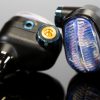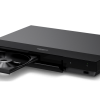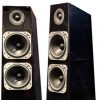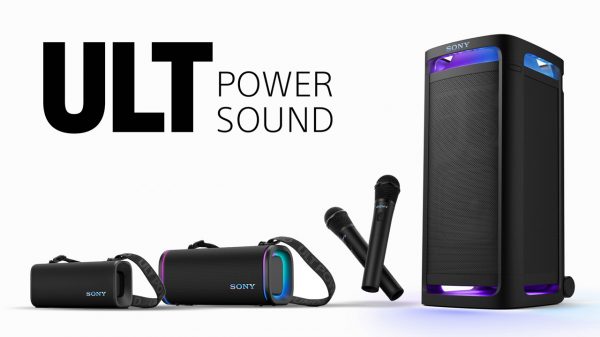As explained in our reference article “WTF is HDR?”, High Dynamic Range enables TVs, displays, and projectors to reproduce a wider range of color, contrast, and brightness when compared to devices without this capability. To do so requires content (video) which is encoded with HDR as well. Video devices and content without HDR encoding or capabilities are referred to as SDR (Standard Dynamic Range).
Before the days of 4K TVs and 4K broadcasts, most content (including high quality physical media like Blu-ray Disc) was encoded in SDR. And while it is possible to encode HD or even SD content with HDR, it is much more common to find 4K resolution and HDR used together, whether in broadcasts, streaming or on physical media like UHD Blu-ray Disc. With HDR encoding in the content and HDR decoding on the display device, viewers can enjoy brighter, more colorful, more dynamic image when watching movies or TV shows.

There are two general types of HDR in use: Static and Dynamic.
Static HDR
HDR10 is an example of static HDR. This means that the HDR encoding is applied equally throughout a piece of content. During the mastering process, the brightest point and darkest points for the entire movie or program are marked, so when the HDR content is played back all the other brightness levels are indexed to those points. All HDR-enabled devices are compatible with HDR10, an open standard.
Dynamic HDR
Although HDR10 provides a foundation, other HDR formats provide more precision by employing a dynamic approach. Dynamic HDR allows scene-by-scene or frame-by-frame variation in dynamic range. This means what you see is based on the brightness levels present at a given reference point, such as a frame or scene, rather than limited to the maximum brightness level for an entire film or program content.
Examples of Dynamic HDR include: HDR10+, Dolby Vision, Technicolor HDR, and HLG (Hybrid Log Gamma), the topic of this article.
If you’ve gone shopping for a TV in recent years, you’ve probably seen some of those terms printed on the side of the packaging — but HLG is unlikely to be something that you would have seen, because it is not as widely promoted as HDR10+ or Dolby Vision.

HLG
HLG stands for Hybrid Log Gamma. HLG was developed as a joint HDR initiative by BBC (England) and NHK (Japan).
Although the goal is to achieve the same results as other HDR formats, HLG is designed primarily as an HDR solution for broadcast television rather than streaming or physical media sources. However, it is sometimes included in streaming content as well.
The reason that HLG is suited for broadcast television needs, is that it doesn’t require additional bandwidth that isn’t already in use. This means that TV broadcasters don’t have to make a major investment in new television transmission equipment. Also, HLG is royalty-free (open source), another money saver for TV broadcasters and TV set makers as they are not required to pay a licensing fee in order to include it in their hardware.
Unlike HDR10, HDR10+, and Dolby Vision. HLG encodes its HDR data into a signal that is compatible with both SDR and HDR-capable TVs and doesn’t use metadata that has to be decoded by a compatible receiving TV.
As a result, HLG saves bandwidth, something that is very important for over-the-air broadcasts such as ATSC 3.0 (Next Gen TV). The amount of bandwidth required is less when compared to other HDR formats. However, SDR TVs that receive and play HLG-encoded content will still display the image in SDR, but there may be some minimal improvement in luminance and color that will fit into the SDR bandwidth. In other words, there is a very slight overlap.
HLG adjusts itself to each TV’s light output (brightness) display capability and conforms to a 10-bit color depth.
How HLG Works
HLG works by employing a non-linear optical-electro transfer function (EOTF). This converts the video broadcast signal into the luminance (aka picture brightness) level that appears on the TV screen. There are two parts to the transfer function.
One part of the TV broadcast signal uses a Gamma curve to display the transition from black to white, which is a standard way of displaying luminance on a TV screen.
In addition, HLG includes a companion signal that employs a Logarithmic curve rather than a Gamma curve. This option transfers the HDR part of the signal, expanding the range of transition from black to white, and extending the luminance that can be displayed on an HDR-enabled TV.
The use of both the Gamma and Logarithmic curves is the reason why this HDR format is labeled Hybrid Log Gamma.
SDR-enabled TVs can display the gamma curve portion of the signal, while HDR-compatible TVs with HLG decoding can display the logarithmic portion. HLG contains both the SDR and HDR portions of the same broadcast signal without using metadata that has to be decoded using a specific HDR format. Any HDR-enabled TV with HLG decoding can display the logarithmic curve, while an SDR-enabled TV or a TV without HLG decoder can display the gamma curve.
HLG capability is available on most TVs made in 2016 or later. To find out if your TV is HLG-compatible, check the TV’s user guide or check their online product page.
The Bottom Line
HLG HDR is unique in that it is backward compatible with SDR broadcasts and can work over limited broadcast bandwidths, making it an attractive option for OTA broadcasters and streaming services. As HLG HDR content becomes more ubiquitous in Next Gen TV (ATSC 3.0) broadcasts and in streaming services, it’s becoming more relevant to TV and projector buyers as well. At eCoustics, we feel it’s important to make sure that any new display you purchase has as many of the HDR formats as possible, for maximum compatibility. This way, you’ll be able to take full advantage of any flavor of HDR and get the best picture possible out of any source.
Related Reading


















































